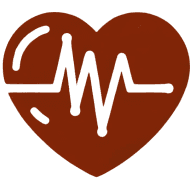How Do You Incorporate Patient Education into Managing Chronic Heart Conditions?
Managing chronic heart conditions requires more than just medical treatment; it demands a comprehensive approach to patient education. From utilizing visual aids for clear explanations to leveraging technology for remote monitoring, educating patients is a critical component of their care. This post explores practical strategies for clinicians to effectively incorporate patient education into the treatment of chronic heart conditions.
- Explain Diagnoses with Visual Aids
- Embrace Shared Decision-Making
- Teach Self-Management Practices
- Personalize Patient Education
- Use Technology for Remote Monitoring
- Provide Culturally Sensitive Materials
Explain Diagnoses with Visual Aids
Good day,
Patient education is key to managing chronic heart conditions, and I ensure it's addressed comprehensively in every care plan. I begin by explaining diagnoses simply yet profoundly, ensuring comprehension of their impacts on the heart and overall health. Models, visual aids, and digital tools like apps and wearable devices facilitate patients' tracking vitals and recognizing warning signs.
Beyond didactics, I emphasize implementable lifestyle changes covering heart-healthy diets, exercise routines, stress management, and adherence. Rather than overwhelming with facts, recommendations are customized steps for individual lives. Shared decision-making inspires ownership, encouraging empowerment beyond adherence. Regular follow-ups reinforce learning and accessibility via visits, calls, or platforms to answer concerns. The objective exceeds addressing conditions and equipping patients with knowledge and confidence in managing heart health daily.

Embrace Shared Decision-Making
Shared decision-making involves healthcare providers and patients working together to create a care plan. This approach respects the patient's preferences, needs, and values. Patients feel empowered to take an active role in managing their health.
This collaboration leads to better adherence to treatment plans and improved outcomes. Embrace shared decision-making to enhance patient care and support.
Teach Self-Management Practices
Educating patients on self-management practices is essential for managing chronic heart conditions. Patients should be taught about medication adherence, lifestyle changes, and symptom monitoring. Providing the right tools and resources helps patients feel more in control of their health.
This empowerment can lead to better health outcomes and a more positive outlook. Encourage self-management education to foster patient independence and well-being.
Personalize Patient Education
Each patient's needs and learning style are different, so education should be personalized. Customizing information helps ensure patients understand and retain what they learn. Tailored education can address specific concerns and barriers to care.
This personalized approach fosters trust and makes patients feel valued. Focus on individualizing education to improve patient engagement and success.
Use Technology for Remote Monitoring
Technology such as apps and wearable devices can be used for remote monitoring and education. These tools can track vital signs, remind patients to take medications, and offer educational content. Remote monitoring allows for timely interventions and continuous support.
Using technology can make managing chronic conditions more convenient and less stressful. Leverage technology to enhance patient education and care.
Provide Culturally Sensitive Materials
Providing educational materials that are accessible and culturally sensitive is crucial. Materials should be easy to read and available in multiple languages. They should also consider cultural beliefs and practices that may affect health behaviors.
Accessible and sensitive materials help ensure patients from diverse backgrounds receive the right information. Make patient education inclusive to improve health outcomes for all.

